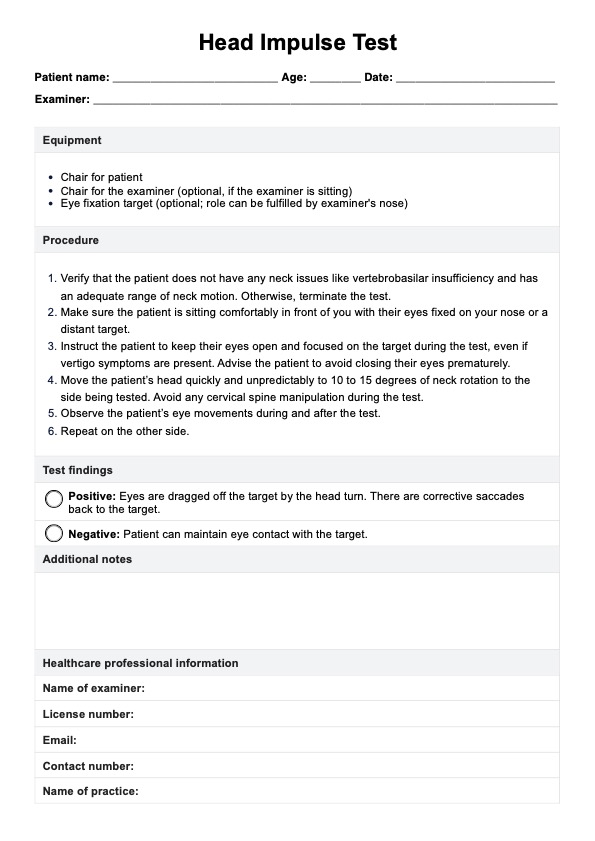To perform the Head Impulse Test, quickly and unpredictably rotate the patient's head by 10-15 degrees to one side while they focus on a stationary target, and observe for corrective eye movements.

Head Impulse Test
Discover the Head Impulse Test, its advantages, and how to perform it with our free PDF template. Perfect for physical therapists and healthcare professionals.
Use Template
Head Impulse Test Template
Commonly asked questions
A positive Head Impulse Test indicates vestibular hypofunction, where corrective saccades occur as the eyes move back to the target after head rotation.
The normal Head Impulse Test differentiates acute cerebellar strokes from vestibular neuritis. Patients with vestibular neuritis will have an abnormal Head Impulse Test, while those with cerebellar strokes will have a normal Head Impulse Test.
EHR and practice management software
Get started for free
*No credit card required
Free
$0/usd
Unlimited clients
Telehealth
1GB of storage
Client portal text
Automated billing and online payments











